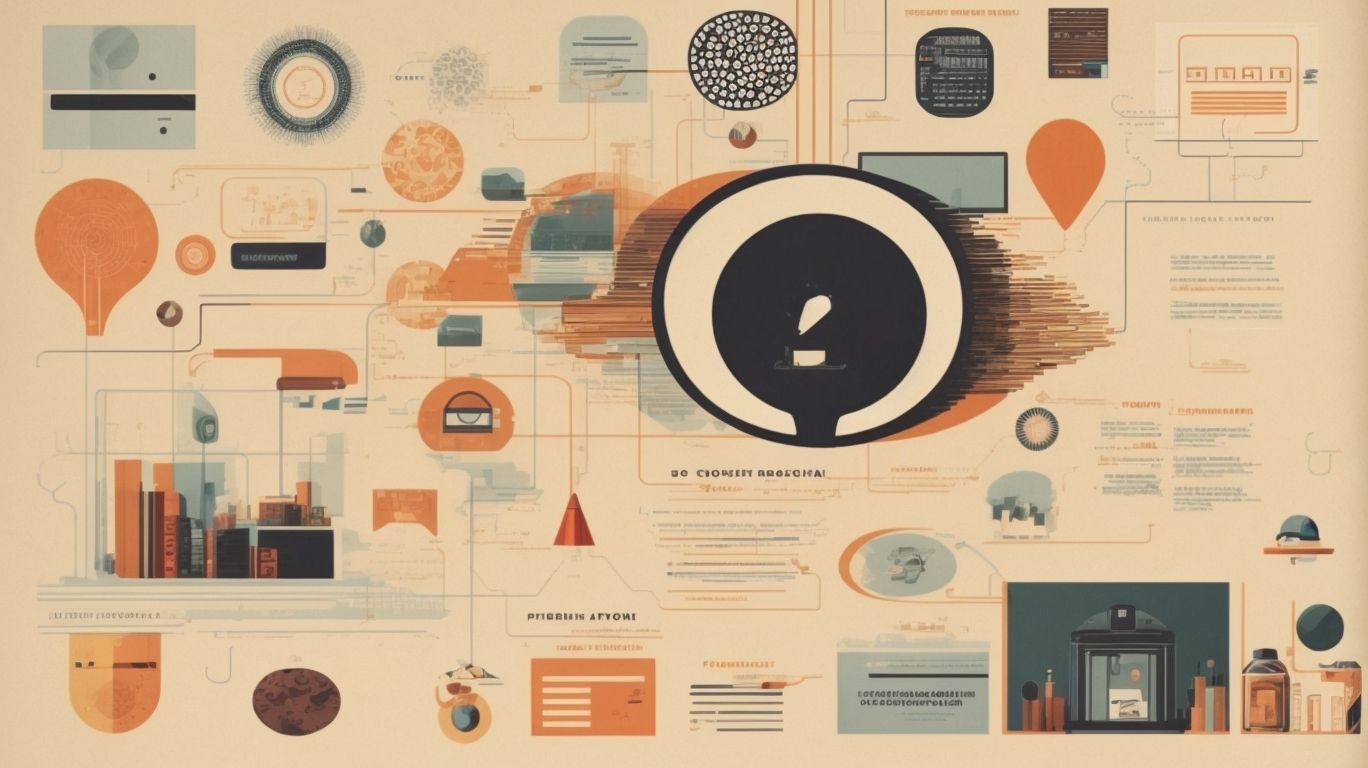Recognition in psychology is a fascinating concept that plays a crucial role in our daily lives. From identifying familiar faces to recalling important information, recognition is a cognitive process that influences how we interact with the world around us.
In this article, we will explore what recognition is, how it works, the different types of recognition, and the factors that influence it. We will discuss the benefits of recognition, as well as its limitations. Join us as we delve into the intriguing world of recognition in psychology.
Contents
What Is Recognition in Psychology?
Recognition in psychology refers to the cognitive process of identifying or verifying previously encountered information, drawing upon recollection and familiarity to make decisions about the presence of specific stimuli.
Recollection involves retrieving specific details or events from memory, such as recalling where and when a piece of information was learned. On the other hand, familiarity is a feeling of knowing without the ability to fully recollect the details. These two processes work in tandem during recognition tasks, allowing individuals to discern between what is known and what is new.
Recognition memory plays a crucial role in various cognitive functions, including learning, problem-solving, and decision-making. The dual-process theories, proposed by prominent figures such as Wilhelm Wundt, Arthur Wigan, and George Mandler, attempt to explain how recollection and familiarity contribute to recognition performance.
How Does Recognition Work?
Recognition operates through complex cognitive processes involving signal detection theory, where stimuli are assessed based on their association, activation levels, and contextual cues to determine their familiarity or recollection.
Signal detection theory, developed by Atkinson and Juola, plays a crucial role in recognition tasks by distinguishing signals from noise, enabling individuals to make accurate judgments in various situations. This theory underscores the importance of sensitivity and decision criteria when detecting and recognizing stimuli.
The contributions of pioneers like Hermann von Helmholtz and Francis Donders have significantly advanced our understanding of recognition processes. Their research on the cognitive mechanisms involved in perception and memory has provided valuable insights into how associations, activations, and contextual factors influence recognition performance.
What Are The Types Of Recognition?
Recognition manifests in various forms across sensory modalities, encompassing visual recognition for images, auditory recognition for sounds, tactile recognition for touch sensations, and olfactory recognition for smells, often applied in the design of user interfaces.
Visual recognition in UI design involves using icons, colors, and shapes to guide users efficiently, like how social media platforms use unique logos.
Auditory recognition enhances accessibility, such as voice commands in smart devices, enabling users to interact hands-free.
Tactile recognition, seen in touchscreens’ haptic feedback, provides physical cues for virtual actions, offering a more engaging user experience.
Olfactory recognition, though less common, could be used to trigger memories or emotional responses, like adding scents to enhance virtual reality experiences.
Visual Recognition
Visual recognition involves the ability to identify and interpret visual information, relying on perceptual processes, pattern recognition, and practice to enhance accuracy and speed in recognizing visual stimuli.
Understanding the nuances of visual recognition goes beyond just seeing images; it delves into the intricate processes of the human mind. Experts like Eytan Adar and Jaime Teevan emphasize that perception plays a crucial role in how well an individual can recognize and process visual data. Through practice and exposure to different visual stimuli, one can train their brain to become more efficient in visual recognition tasks.
This skill has wide-ranging implications in our daily lives, affecting tasks from simple activities like identifying road signs to complex operations like facial recognition in security systems. Developing strong visual recognition abilities can significantly optimize performance across various fields, be it in art, technology, or psychology.
Auditory Recognition
Auditory recognition pertains to the process of identifying and recalling sounds or spoken words, with memory retention and recency effects playing key roles in auditory recognition tasks.
When we hear a sound or spoken word, our auditory system processes the acoustic information and sends it to the brain for interpretation. This involves a complex interplay between the auditory cortex and areas responsible for memory formation and retrieval.
Memory retention allows us to store information from past auditory experiences, while the influence of recency determines how recent sounds or words are prioritized in our recognition process. Understanding these mechanisms is crucial in areas of auditory cognition research, where experts such as Susan T. Dumais have made significant contributions.
Tactile Recognition
Tactile recognition involves the perception and identification of objects through touch, utilizing contextual cues, haptic feedback, and usability principles to enhance the effectiveness of tactile recognition processes.
Arthur Allin, a renowned figure in the field, emphasized the importance of understanding the role of context in tactile perception. Factors such as texture, temperature, and shape play a crucial role in how objects are recognized through touch. For instance, the rough texture of sandpaper instantly signals its distinct identity when touched.
In practical applications, tactile recognition is extensively used in assistive technologies for visually impaired individuals. By incorporating braille on keypads, electronic devices enable users to interact seamlessly without visual cues. Similarly, tactile paving on sidewalks provides guidance for those with visual impairments, enhancing their mobility and safety.
Olfactory Recognition
Olfactory recognition refers to the ability to identify and categorize smells, relying on associative processes, environmental contexts, and cognitive frameworks to distinguish different odors and trigger memory associations.
This complex process involves the olfactory system, where odor molecules stimulate receptors in the nose, sending signals to the brain for interpretation. As the brain receives these signals, it engages in a sophisticated pattern recognition system, linking specific smells to past experiences and emotions.
George Mandler, a prominent psychologist, emphasized the role of association and context in understanding olfactory perception. He highlighted how our brains create connections between smells and memories, shaping our overall olfactory recognition abilities.
What Are The Factors That Influence Recognition?
Several factors impact the process of recognition, including the allocation of attention, the accuracy of perception, the efficiency of memory retrieval, and the usability of interfaces that mediate recognition tasks.
Recognition performance is intricately tied to how attention is distributed during the task. The ability to focus on relevant stimuli while filtering out distractions plays a crucial role in accurate recognition.
Similarly, perception accuracy influences the recognition process by determining how information is interpreted. Memory retrieval efficiency also significantly affects recognition, as the ability to recall relevant information swiftly is vital.
The usability of interfaces facilitates effective recognition by providing clear cues and reducing cognitive load during tasks. Sources like ‘Examples of Recognition in Psychology‘ offer valuable insights into understanding these cognitive processes.
Attention
Attention plays a pivotal role in recognition tasks, with dual-process theories suggesting that focused attention and divided attention mechanisms influence the accuracy and efficiency of recognition processes.
Research in cognitive psychology has highlighted the critical nature of attentional mechanisms in shaping how individuals perceive and process incoming information. Focus attention directs cognitive resources to specific stimuli, allowing for in-depth analysis and increased recognition accuracy.
On the other hand, divided attention involves distributing cognitive resources across multiple stimuli simultaneously, impacting the speed at which recognition occurs and potentially leading to reduced accuracy.
Arthur Wigan, the 19th-century psychologist, made significant contributions to the study of attentional processes, particularly through his work on optical illusions and visual attention. Wigan’s research paved the way for understanding how attentional mechanisms can influence cognitive recognition abilities.
Perception
Perception shapes the initial encoding and interpretation of stimuli in recognition tasks, with associative processes identified by Wilhelm Wundt as fundamental to the formation of perceptual representations for recognition.
Perception, in the context of recognition tasks, involves the way individuals interpret and make sense of incoming sensory information. Our ability to recognize objects, faces, or situations is heavily influenced by how we perceive them. Associative mechanisms play a crucial role in this process, as they connect new stimuli with existing cognitive structures stored in our memory.
Wilhelm Wundt, a prominent figure in perceptual psychology, emphasized the importance of these associative processes in creating meaningful perceptual representations. His work laid the foundation for understanding how our past experiences and knowledge influence the way we perceive and recognize the world around us.
Perceptual biases, such as confirmation bias or habitual response patterns, can significantly impact recognition outcomes. For example, when viewing a familiar object, we may overlook details that do not fit our preconceived notions, leading to misinterpretations or errors in recognition.
Memory
Memory retrieval is a critical component of recognition, with activation levels and contextual cues facilitating the recognition of stored information, as suggested by the influential work of Francis Donders in memory research.
When individuals encounter familiar stimuli, the process of recognition heavily relies on memory systems that store information processed previously. Memory retrieval involves the activation of neural networks that reproduce the encoded information, allowing for comparison with the current input. This retrieval mechanism, essential for recognition tasks, is intricately linked to the activation levels of stored representations. Studies in cognitive psychology often reference Francis Donders’ experiments to illustrate the intricacies of memory and recognition processes.
What Are The Benefits Of Recognition?
Recognition offers numerous advantages, including facilitating learning and problem-solving tasks, enhancing memory retention, and improving social interactions through swift and accurate identification processes.
Effective recognition plays a critical role in cognitive development by reinforcing neural pathways in the brain, thereby improving overall mental acuity. When individuals receive timely recognition for their efforts or achievements, it serves as positive reinforcement, motivating them to continue excelling. This positive feedback loop can have a profound impact on self-confidence and self-esteem, fostering a culture of encouragement and growth within a learning environment.
Helps In Learning And Problem Solving
Recognition plays a pivotal role in learning and problem-solving scenarios, enabling individuals to apply recollection and familiarity to identify patterns, concepts, and solutions efficiently.
Recollection involves retrieving specific details or memories from past experiences, aiding in the identification of similar situations or solutions in current problems. Familiarity supplements this process by allowing quick recognition based on previous encounters with similar content or tasks. Together, these cognitive mechanisms streamline the decision-making and problem-solving processes by leveraging stored information. Usability, on the other hand, refers to the ease of recognizing and applying relevant knowledge or strategies, emphasizing the importance of accessible and well-structured educational materials. Incorporating usability principles in learning environments can significantly enhance the speed and accuracy of recognition, optimizing learning outcomes and problem-solving abilities.
Improves Memory
Effective recognition practices can lead to memory enhancement, with the recency of recognition experiences influencing the retention and recall of information, as observed in studies conducted by organizations like Amazon.
Understanding the relationship between recognition and memory improvement is crucial in developing strategies to boost cognitive functions. Research has shown that prompt and personalized recognition acts as a catalyst for encoding information into long-term memory banks, aiding in quicker recall. The concept of recency in memory consolidation underlines the importance of reinforcing recognition consistently to reinforce neural pathways. Companies like Amazon have utilized these findings to design employee recognition programs aimed at enhancing workplace productivity and knowledge retention.
Enhances Social Interactions
Accurate recognition abilities enhance social interactions by enabling effective communication, establishing rapport, and personalizing user experiences, as exemplified in the design of user interfaces by major platforms like Bing.
When individuals possess the capacity to accurately recognize emotions, intentions, and cues in others, it significantly enriches the quality of their interactions. By accurately discerning expressions and non-verbal cues, individuals can respond appropriately, fostering deeper connections and understanding.
This precise recognition is crucial for effective communication as it enables individuals to tailor their responses based on the nuances of the situation. For instance, in user interface design, platforms like Bing utilize accurate recognition algorithms to deliver personalized content recommendations, enhancing user satisfaction and engagement.
The ability to recognize and respond to others’ emotions also plays a vital role in relationship-building, strengthening bonds through empathy and support. In a broader societal context, accurate recognition skills pave the way for enhanced social connectivity, promoting understanding and unity among individuals.”
What Are The Limitations Of Recognition?
Despite its benefits, recognition is subject to limitations such as the generation of false memories, susceptibility to bias and stereotypes, and vulnerability to emotional influences that can distort accurate recognition processes.
False memories pose a significant challenge in recognition tasks, leading to instances where individuals recall events that never actually occurred. This phenomenon is particularly evident in eyewitness testimonies, where memory inaccuracies can have profound consequences in legal proceedings.
Bias and stereotypes further impede recognition accuracy by skewing judgments towards preconceived notions, hindering the objective evaluation of information. For example, in the context of computing systems like UNIX, bias in system design can lead to overlooked vulnerabilities or inefficient operations.
Emotional influences can cloud recognition processes, influencing perceptions and decisions. In various scenarios, heightened emotions can impact the clarity of recognition, making it harder to separate relevant signals from noise.
Can Lead To False Memories
Recognition can inadvertently result in the creation of false memories, where contextual cues, semantic associations, and cognitive biases, as studied by George Mandler, contribute to the formation of inaccurate recollections.
False memories, a phenomenon that can occur during recognition tasks, pose a significant challenge in memory studies. Contextual cues, such as environment or mood, play a crucial role in the creation of these misleading memories. Semantic associations, where similar words or concepts are linked in memory, can also lead to memory errors. George Mandler’s research shed light on how memory can be influenced by external factors.
To mitigate the occurrence of false memories in recognition processes, strategies such as providing clear and detailed information during encoding, utilizing multiple retrieval cues, and encouraging critical thinking skills have been proposed. These strategies aim to enhance accurate recall and reduce the impact of cognitive biases on memory formation.
Can Be Influenced By Bias And Stereotypes
Recognition processes are susceptible to bias and stereotypes, where preconceived notions, cultural influences, and cognitive activations may distort the objective identification of stimuli, as addressed in research by the Association for Computing Machinery (ACM).
Studies conducted by the ACM have highlighted how these biases can significantly impact the accuracy of recognition tasks, leading to disparities in identification outcomes. The role of cognitive activations in shaping biases is crucial, as individuals’ mental processes can unconsciously influence their perception. For instance, exposure to certain stereotypes can trigger cognitive biases that interfere with the clarity of recognition.
Recognizing and addressing bias-related challenges in identification processes is imperative for ensuring fairness and accuracy. Techniques such as diverse training data, algorithmic transparency, and continuous evaluation are being increasingly utilized to mitigate bias in recognition systems.
Can Be Affected By Emotions
Emotional states can influence recognition outcomes, as strong emotions, emotional priming, and affective experiences may impact cognitive processes during identification tasks, a phenomenon studied by researchers at SIGCHI and documented on nngroup.com.
Research in this field has shown that emotions play a crucial role in how accurately individuals can recognize information or objects. For instance, when someone is in a highly emotional state, they may be more prone to errors or misinterpretations. Studies presented at the SIGCHI conference have revealed that emotions can either enhance or hinder the recognition process, depending on the context and intensity of the emotion.
To optimize recognition accuracy amidst emotional influences, it is suggested to implement strategies such as mindfulness techniques, cognitive reappraisal, and creating a conducive work environment that minimizes distractions and emotional triggers. By acknowledging the impact of emotions on recognition performance and adopting these proactive measures, individuals and organizations can enhance their overall recognition accuracy and efficiency.
Frequently Asked Questions
What is recognition in psychology?
Recognition in psychology refers to the process of identifying and categorizing sensory information, memories, or experiences based on previous knowledge or experience.
What are some examples of recognition in psychology?
Examples of recognition in psychology include recognizing familiar faces, recalling a specific memory, and identifying a particular object based on its characteristics.
How does recognition play a role in memory?
Recognition is an important aspect of memory as it allows us to retrieve information from our long-term memory and identify it as something we have previously experienced or learned.
Can recognition be affected by external factors?
Yes, external factors such as context, emotions, and stress can influence our ability to recognize information. For example, being in a different environment may make it more difficult to recognize a familiar object.
Is recognition a conscious process?
Recognition can occur both consciously and unconsciously. Some forms of recognition, such as recognizing a familiar face, may happen automatically without conscious effort, while others may require conscious effort and attention.
How does recognition impact decision making?
Recognition can impact decision making by influencing our perceptions and understanding of a situation. Our ability to recognize patterns and connections between information can also affect the choices we make.




